Here’s my review of the show aired on the 17th of June 2020. We’re down to the last 4 contestants for semi-finals week, which takes us on a trip to the movies.
See my YouTube video below with links below to the patterns & fabric that I found this week.
***Spoiler Alert – I reveal the Garment of the week & the person who was eliminated***
Round 1
The contestants had 4.5 hours to sew a halterneck dress inspired by the iconic dress worn by Marilyn Monroe in the 7 Year Itch. The twist to this challenge was that they were given both pleated & non pleated polyester fabric to use, so no running to the haberdashery, giving them a level playing field where they would be judged on cutting & sewing.
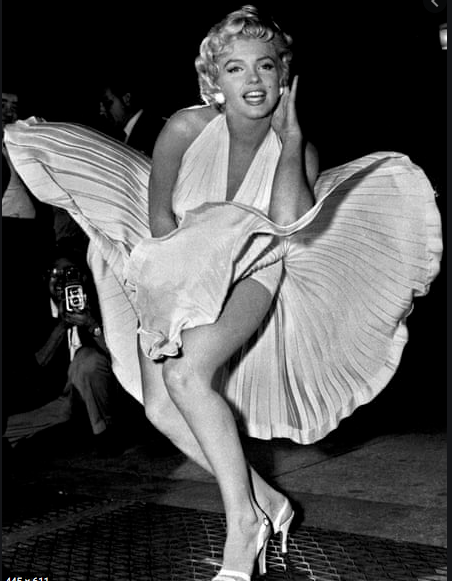
There are 8 pleats on each bust panel on the bodice which is then bagged out so that the seam doesn’t show. The bodice is sewn on to the waistband, which is then sewn on to the full circle skirt & an invisible zip is added, with 2 hook & bars to fasten the halterneck. It looked as though they the may have used the services of somewhere like Ciment, that will pleat fabrics for dressmakers. Stitchless TV did a quick interview with them for anyone who is interested.
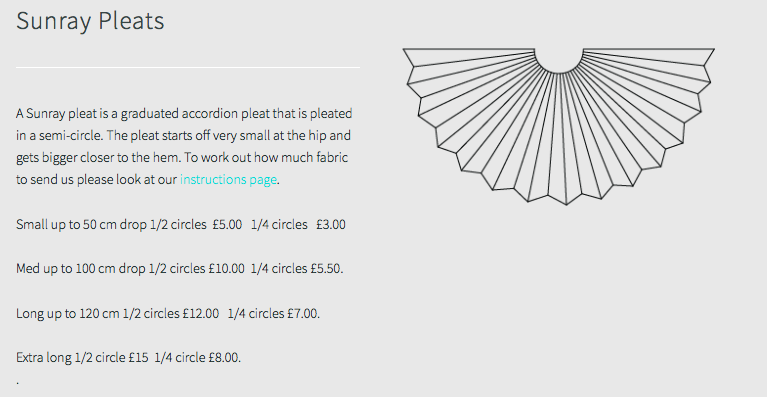
The Fabric
I was quite surprised that they were given a fabric that needed to hang for at least 24 hours to allow the bias to drop. As Liz pointed out the fabric that they were given was very slippery & when Nicole cut hers, it had ‘grown’ out of shape & she remarked that there is a lot of bodging in sewing but there are methods of cutting to prevent that happening. I think that both were referring to the bodice fabric here, which looked to be a lightweight polyester crepe & they could have either used a spray starch to stiffen the fabric or used tissue paper to stabilise the fabric when cutting & basting the pleats in place would have helped to keep them in position. Using a walking foot would also have helped to stop the fabric shifting around when sewing. It’s tips like this that I think the show is really lacking, as I would imagine anyone new to sewing may be deterred from trying something like this for fear of ruining their fabric.
For those who want to have a go with pre-pleated fabric, without the added expense of having to take it to be pleated, Plssé is a good alternative, it’s readily available & relatively inexpensive, Minerva have a few options, be warned though it will be very difficult to find a plissé for the skirt & an unpleased fabric in the same composition & shade for the main body. Whenever I’ve ever used plissé, it doesn’t need hemming & as I recall this is the same fabric that Nicole had chosen for the wrap skirt in the 1st episode & it just didn’t look great when she tried to hem it.
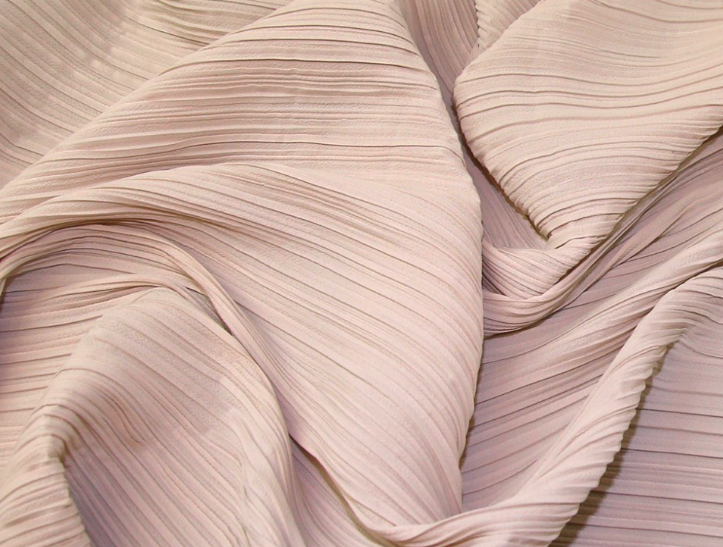
You did see the sewers stabilise bodice parts that were curved or on the bias with interfacing but the book doesn’t suggest this but rather has you stay stitch & under stitch these parts. It would be interesting to see which method would be the most effective or if both methods could be applied to prevent the armholes & neckline from stretching. I sometimes feel that these areas can get overworked is counterproductive.
The Pattern
This is one of the patterns that’s included in the accompanying book to the series, ‘Sustainable Style’, the fabric suggestions in here are rayon, bamboo silk, viscose or silk – something with plenty of drape, there’s no mention of the pleated fabric from the show & I have it on good authority that it was bamboo silk that was used in the sample for the book, (Susan Young made sewed the sample, of Susan Young Sewing blog). A good alternative would be the silk/acetate crepe from Fabworks that I used for tea dress.
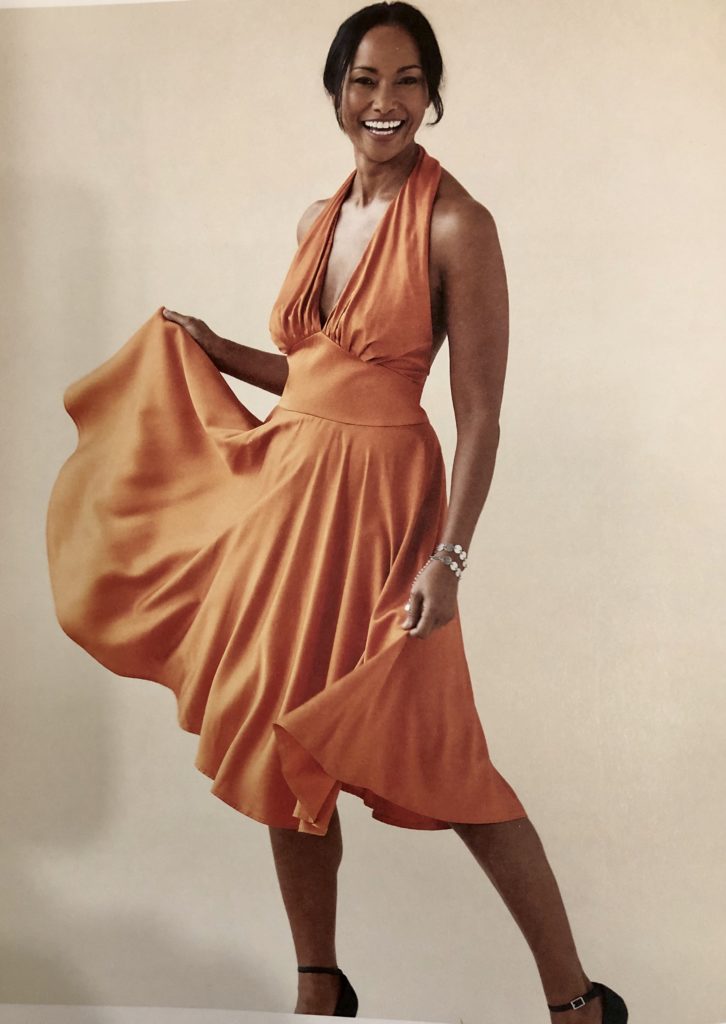
Halterneck dress in GBSB Sustainable Style 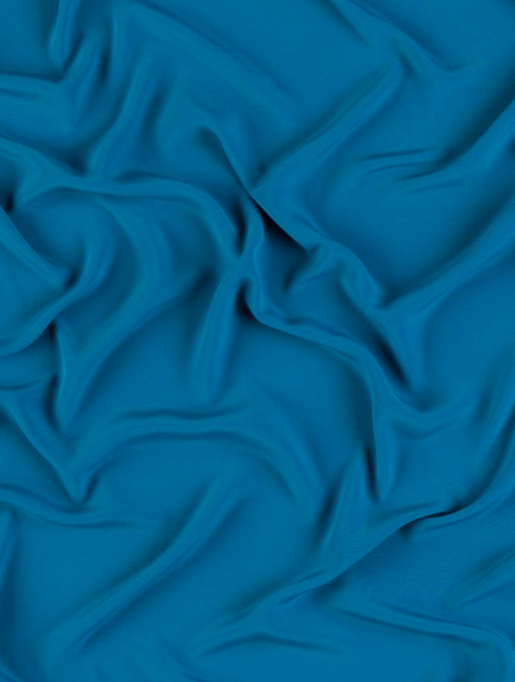
Oh So Soft Crepe de Chine from Fabworks
I also own a couple of other halterneck dress patterns, the 2 from Butterick below, there a quite a lot of these sort of patterns around & I quite like the Folkwear one below, it also comes with a bolero, I’ve included this because I love the artwork. I haven’t been able to find any free patterns for this, with the exception of some very basic, self drafted ones based on triangles & a full circle skirt but Helen at Sew My Style did a series about drafting her own dress based on the original, which is really interesting.
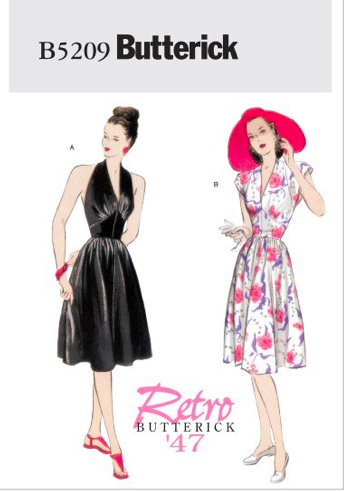
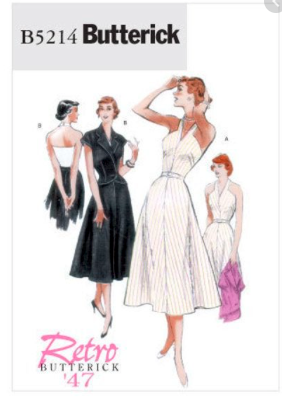
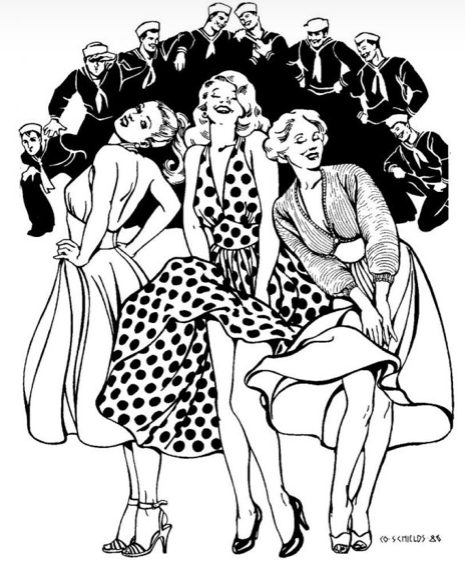
Folkwear Blonde Bombshell Pattern
What They Made
Liz chose Red fabric in the absence of black 😉 She seemed to take a lot of time over her bodice & cut the top off her invisible zip, which meant that it didn’t go to the top of the waistband in her completed dress. She had also stretched out the side of her bodice & didn’t manage to hem or get her hook & bars on. 4th
Clare chose a Pale Blue, as it was the closest to the Marilyn dress. She seemed to cope with most of the tasks in her usual calm manner but didn’t manage to hem hers & it was noticeably uneven but as Patrick pointed out a few of them were as they hadn’t had the time to ‘drop’. She had a slight bit of gaping under the arm where the fabric had stretched, that Esme pointed out but did well overall. It was really good sewing but not perfect according to the judges & came 2nd
Nicole chose Yellow for her dress & struggled getting the pleats even under the bust as the fabric kept shifting & had a little help from the judges when they pointed it out. She then hadn’t bagged out her bodice, so had raw edges all down the front of the bodice which had already been attached to the waistband & skirt, so it was too late to go back & do it properly, so had to tuck in her ends & topstitch it down. She also didn’t manage to hem hers but it didn’t seem as uneven as Clare’s & Liz’s & had attached the bars but not the hooks. 3rd
Matt had sewn a Marilyn inspired dress before, so went into the challenge feeling confident. He chose a cobalt blue fabric & was the only one to have sewn his hem & complete the challenge. The judges felt that his was the best & awarded him 1st.

Round 2 Transformation Round
The contestants had 90 minutes to transform junkyard & charity shop items into a SciFi inspired garment. The judges were asking for something couture inspired rather than looking like they had covered themselves in glue & rolled around in a load of scrap. Plato’s Atlantis collection by Alexander McQueen was referenced. I think that I would have really struggled with this round faced with old CDs, phones, laptops & what looked like vacuum hose, as I really don’t watch SciFi but even I’ve heard of Barbarella, (don’t think I’ve seen it though) 😊
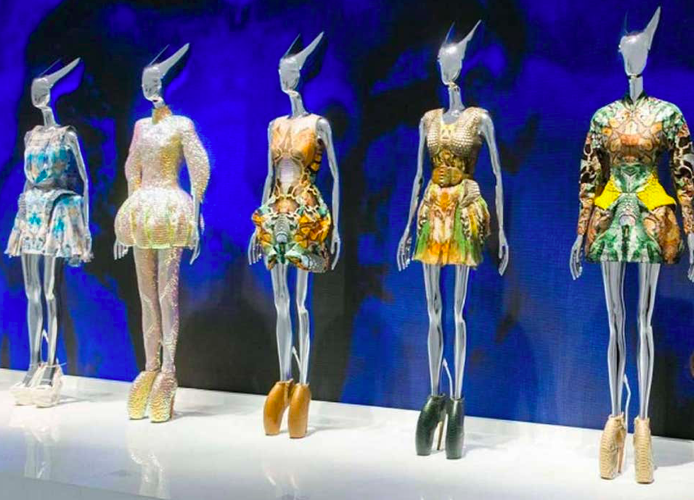
Nicole started with a wet suit & made a collar out of what looked like silver bubble wrap. The judges like the different combinations of junk & the textures, saying that it was strong & impactful. 2nd
Matt based his creation on the 1968 film Barbarella, (which Joe hadn’t heard of!) & made a black & red PVC mini dress. I think that he forgot to incorporate any junk apart from 3 rings with ballbearings (no idea what they were) down the back, so was placed 3rd.
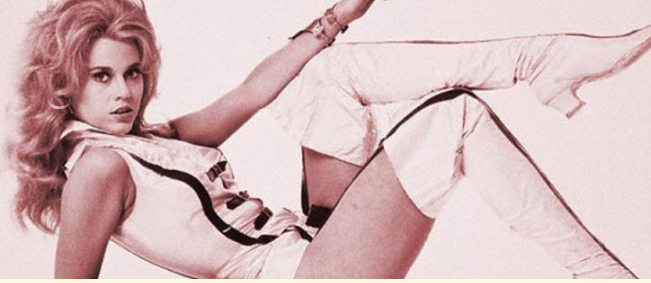
Clare took inspiration from Bladerunner & refashioned a gold lamé dress & added what looked like vacuum hose to the hem & sleeves. She then made a long skirt out of trousers, inserting some of the gold lamé into the middle, to tie it all in. Patrick thought it was stunning, well balanced & could grace a catwalk. 1st
Liz by started with a studded PVC skirt & added it to a top to make giant epaulletes with a nod to Mad Max, made a skirt from a shower curtain & added hip fins & a zip above one bust! Patrick liked the top but felt that the bottom didn’t match up. 4th
Round 3 – Made to Measure
The contestants had 5.5 hours to create a flapper dress inspired by the jazz age – think Great Gatsby & Chicago – embellishment is key! The judges were looking for how the contestants dealt with tricky fabrics along with good shape & fit & a sense of fun, saying that there was scope for an exceptional piece of clothing.
I was quite surprised by the choice of a flapper dress in a made to measure round, as in general these dresses are quite unstructured, they were designed to hide the figure, Esme remarked that the danger would be to make it too tight. The challenge with this round was working with such tricky fabrics, such as beads, sequins, feathers & beading. Along with the fact that they are essentially sewing at least 2 dresses as generally a sheer embellished dress goes over the top of a slip dress.
Agains I haven’t found a free pattern for a Flapper dress, there are quite a few tutorials out there to self draft one, as they can be made from quite basic geometric shapes taking your own measurements. There is a 1920s One Hour dress which the Closet Historian details how to sew one.
Liz made a ‘Cobweb crossover flapper dress’ with a fringed back yoke & a sash at the waist using a cobweb tulle over a simple silver satin slip. We saw her using a hammer to remove any beads that were in the seams, to prevent it all unravelling. The judges liked the combination of fabrics & the beaded fringe at the back & said that the fit was good. The pattern was similar to the 1928 Flapper dress by Bright Young Things on Etsy below but without the asymmetrical flounce, (this is a single size PDF download).
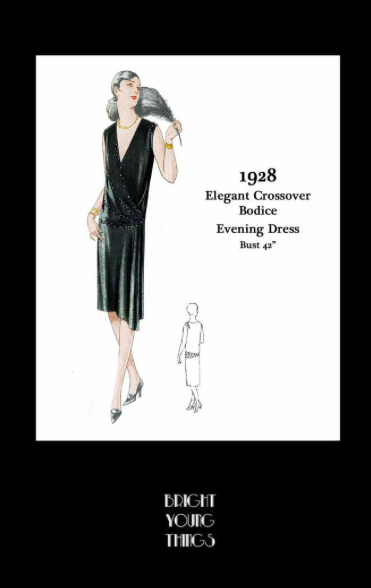

Liz’s finished dress courtesy of the BBC 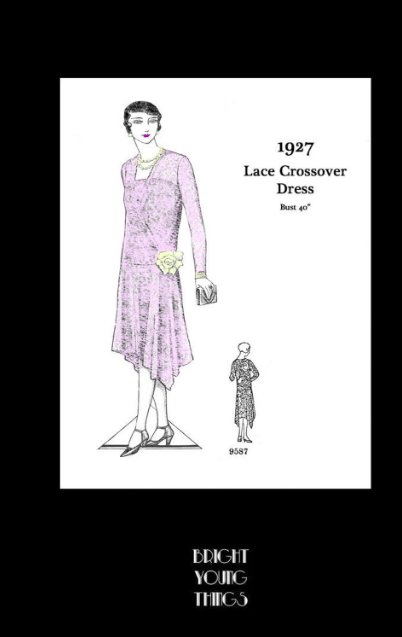
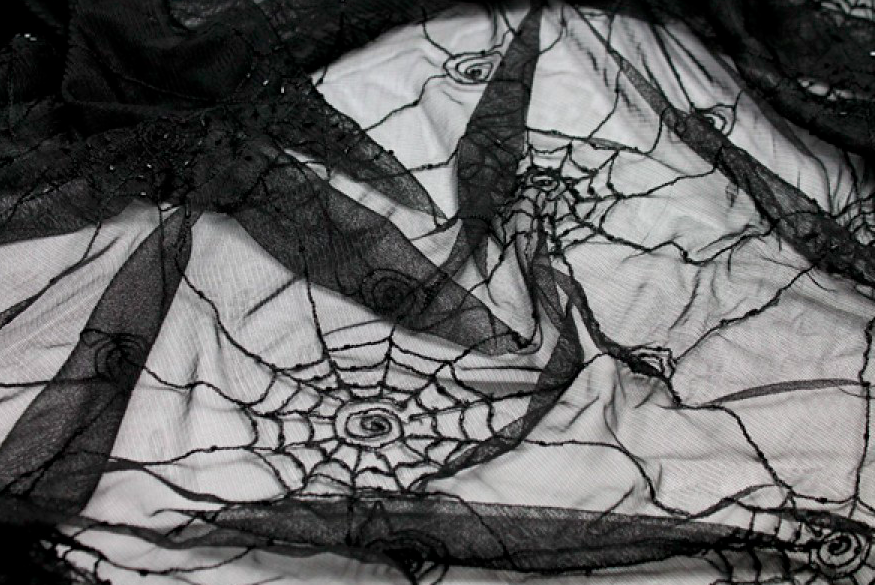
Fabric fro Top Fabrics
Matt used the Pattern Recall pattern below, which is a reproduction of a pattern printed in a German magazine form 1927 & available to download as a PDF, however he added a sash rather than the dramatic flounce, keeping the overall design very simple. He was using some beaded fabric that he bought in New York, (I haven’t been able to find anything similar) with a blue silk/satin under dress. I think that the judges were quite surprised that he intended to sew straight over the top of the sequins. Esme spotted that his V wasn’t bound properly, creating a weak point. Patrick said that his slip was too long & the bulky seams were killing the shape of the dress. Given that the shape was really simple and the beaded overlay was scalloped, so didn’t need hemming & the challenge was all about finishing, he should really have taken the time to remove the sequins from the seams. The judges also felt that he lacked ambition.
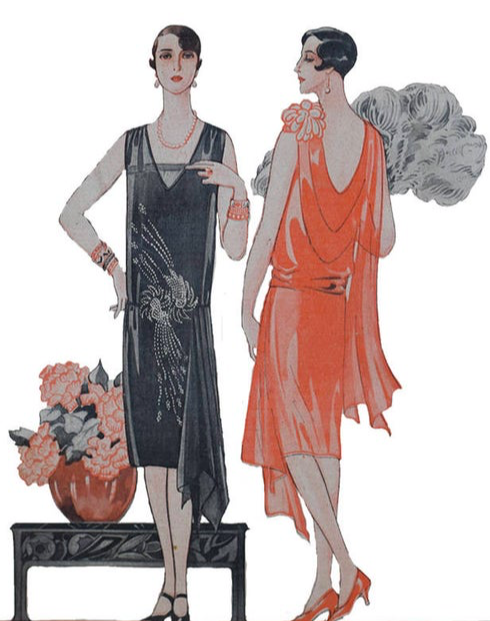
Pattern Recall 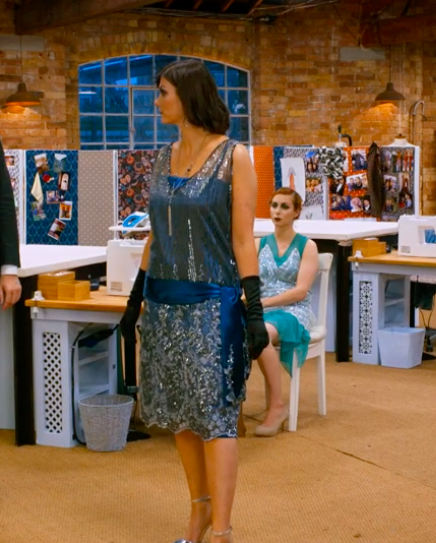
Matt’s finished Dress courtesy of the BBC 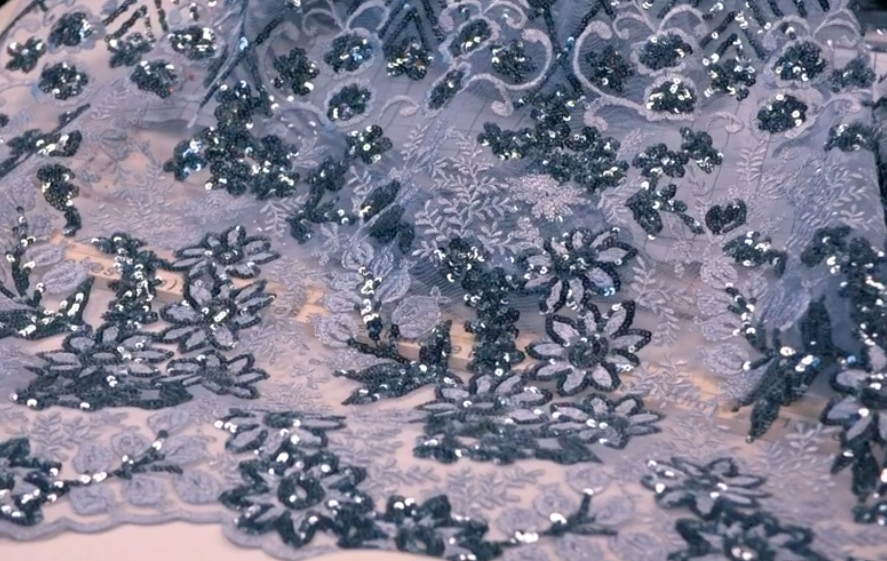
Fabric used by Matt
Clare said that she may have bitten off more than she could chew with her ‘3 Layer Art Deco Flapper dress’ & was the only one to have 3 layers. Her middle layer was a green georgette, which she planned to finish with an 8 point handkerchief hem, with a sequinned Art Deco diamond motif overlay. She said that the construction was simple but the fabric wasn’t but I think she perhaps made one of the more complex dresses with the hem! She struggled with the fit of the overlay which was a tad too snug over the hips which really affected the way that the garment hung, causing her hand sewing to separate too. She was pin hemming the rectangles that formed the bottom but in the end only finished 4 of them. I couldn’t find an exact match for her pattern but below are the Hazel Frock from Decades of Style & the 1930 dinner gown both have the handkerchief hem.
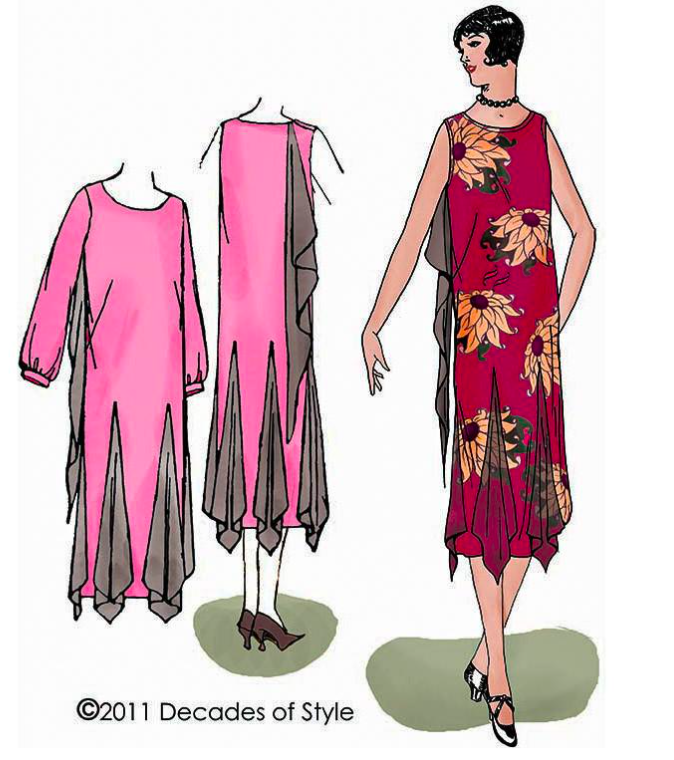
Hazel Dress Decades of Style 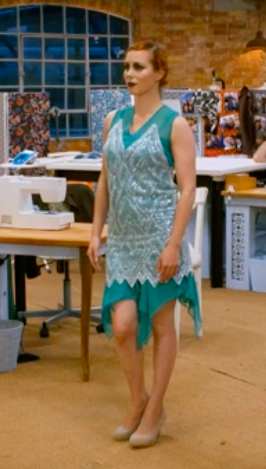
Clare’s finish Dress courtesy of the BBC 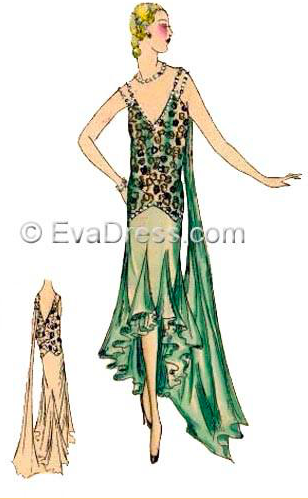
1930s Dinner Gown – Evas Dresses 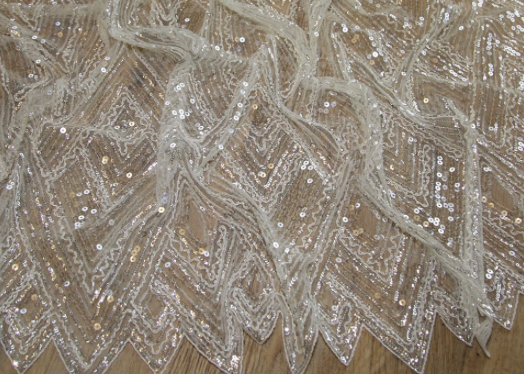
Art Deco Sequins from Minerva Crafts
Nicole Made a black V- necked silk slip with a gold scallop shell sequinned overlay. She remarked that hers was ‘a crash course in every single tricky fabric ever made by man – featuring silk, feathers & sequins!’ She planned to dazzle Esme with the sheer glitz! She used ready made bias binding to form the V on the slip but struggled to get it accurate. It took her a long time to finish the slip & was in danger of not finishing & had to adjust her plans. She sewed the slip to the inside & had to rip it put in the last minutes. I haven’t been able to find either the exact pattern or fabrics for her but her overdress was a similar shape to the Folkwear one below.
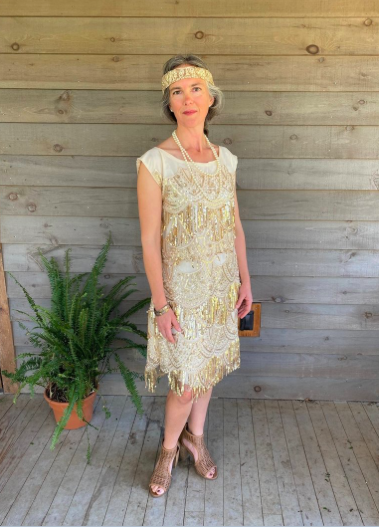
Folkwear 1920’s Flapper dress 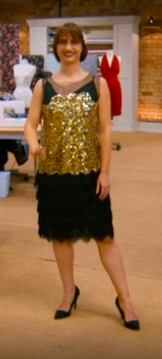
Nicole’s finished dress courtesy of the BBC
The Result
Patrick acknowledged that the pattern challenge was hard, (which you would expect in the semi-final) & that no-one had got it absolutely perfect. Both Liz & Nicole needed to do something exceptional to stay in but despite saying that Liz’s final dress was head & shoulders above the others & was in contention for garment of the week, along with Clare’s transformation, sadly it was Liz that we had to say goodbye to this week & Clare was awarded Garment of the Week for the first time.
Lots of people were asking online what Clare’s dungarees were, apparently she had posted them on Instagram that they were the 1940’s Overalls from Wearing History, the Rosie the Riveter ones below are also very similar.
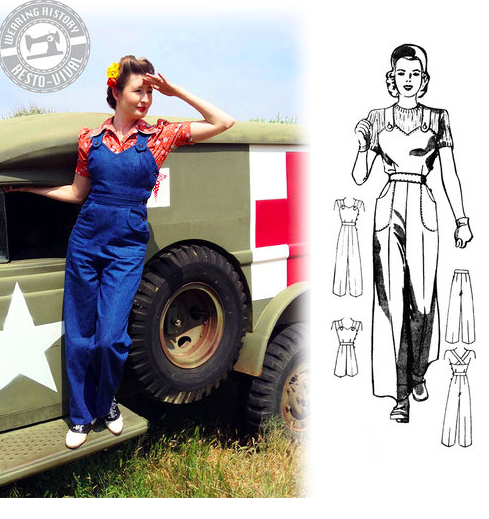
HomeFront Overalls – Wearing History 
Rosir the Riveter- Folkwear
My Challenge
Each week I’ve been challenging myself to make something inspired by the Bee, using patterns & fabrics that I owned. Against my better judgement I decided that I would give the halterneck dress from the book a go. I am never very comfortable with so much flesh on show but thought that if I could get the fit right, then it might make a nice summer dress if I wore a light bolero over the top, so I thought that I’d toile it with some fabric that I had given, I think that it may be lining fabric but has the right amount of drape & isn’t too lightweight.
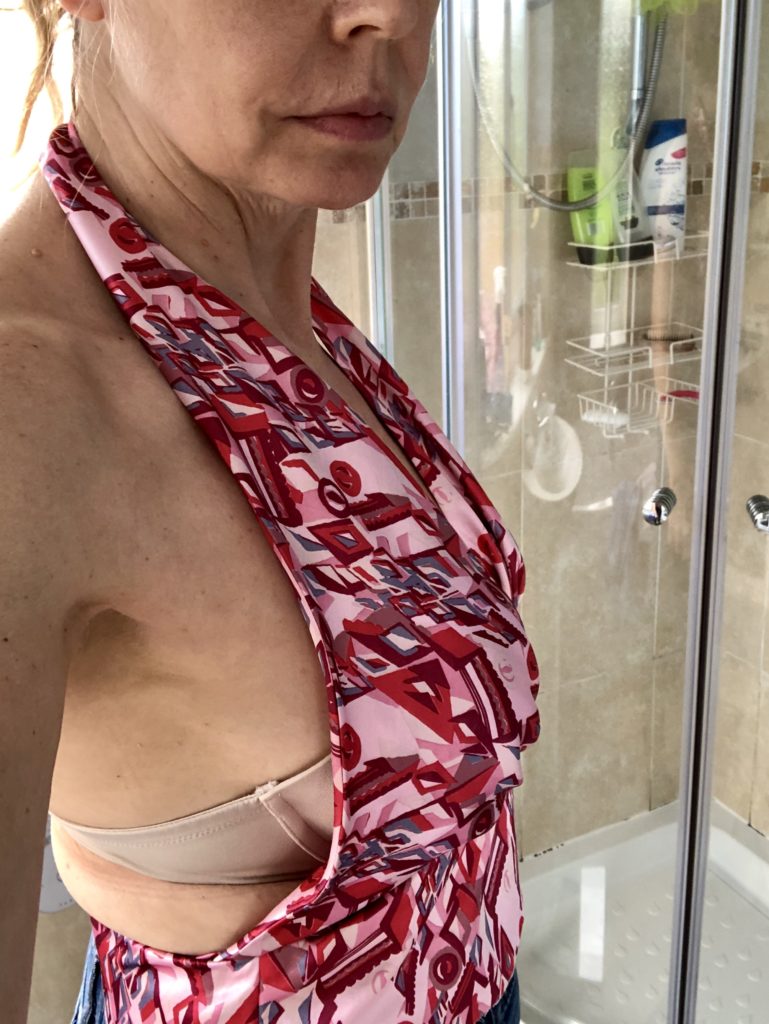
Way too much on show here for me! 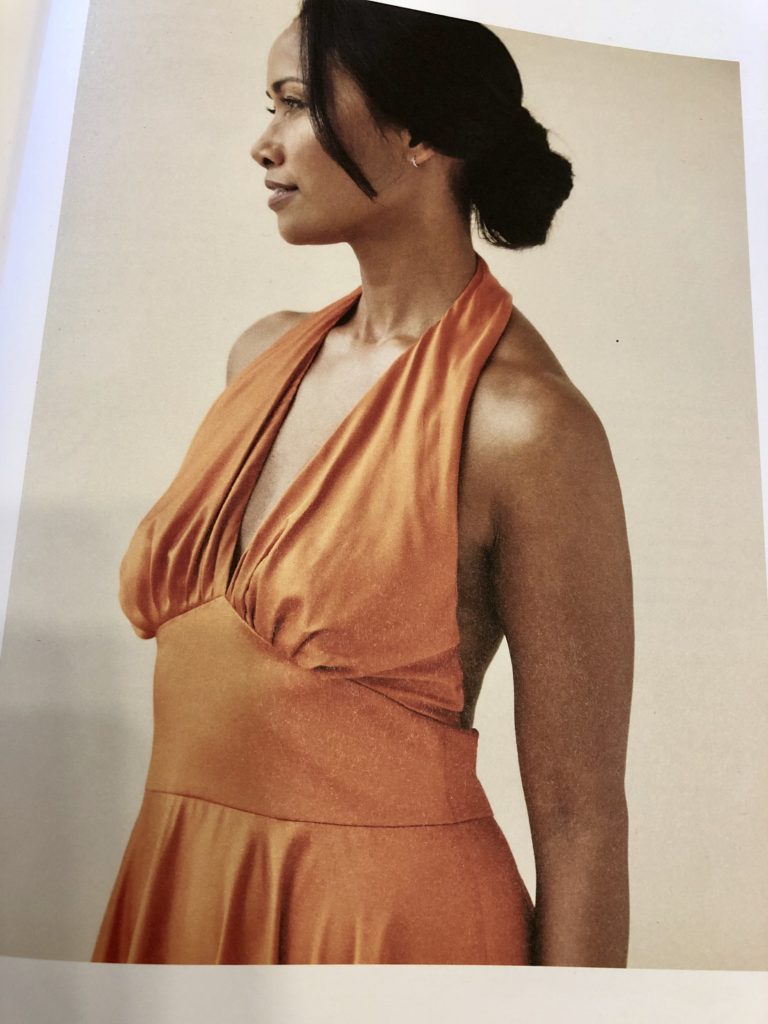
Picture from the book
After checking my measurements at the front of the book, my bust @ 37″ fell between the 12 & 14 but nearer to the 12, however as my waist was the exact size 16 I decided to cut the 14 bust & grade to a 16 at the waist. I think on reflection because of how it is constructed you can probably cut 2 different sizes without grading. I staystitched, understitched & applied interfacing to the neckline, which turned out fine but found that there was way too much gaping at the sides, I could pinch out around 7/8″ of a dart, (so almost 2″ too much fabric). The photo above was taken after I’d made an amendment to it!
Looking at the pattern, even if I had cut the smallest size, I really don’t think that would have brought it in enough for my liking. I tried it on both with & without a bra but really didn’t feel that I wanted to continue further with this pattern. Luckily I didn’t bother cutting out the skirt! It does say at the beginning that for experienced makers the dress is a great test of skills to achieve the perfect fit by adjusting the darts, (the lining has darts, the outer bodice has pleats), but I do feel that no amount of adjusting would make this right for me. Ho hum, nothing ventured, nothing gained, it kept me entertained for a couple of hours if nothing else. I’m not blaming the pattern here, I think this is just my body shape & personal preference.
Next Week – Finals!
So going into the final round next week are Nicole, Matt & Clare & I still can’t call the winner, they have all been good in their own way & Matt gets to bring on his partner Miss Martini, so that should add to the fun.
Let me know below if you’ve tried the halterneck dress from the book & how you’ve got on, until next week.
